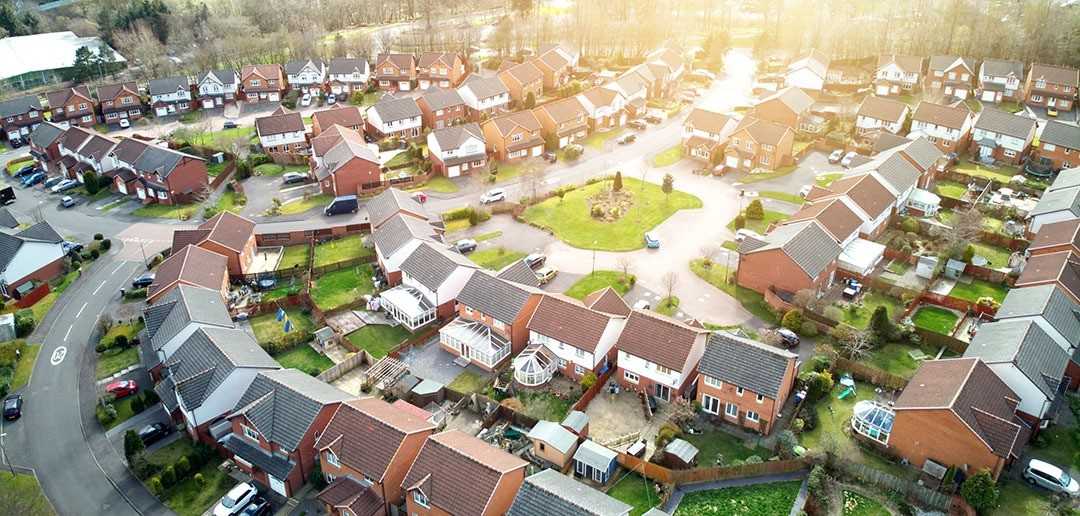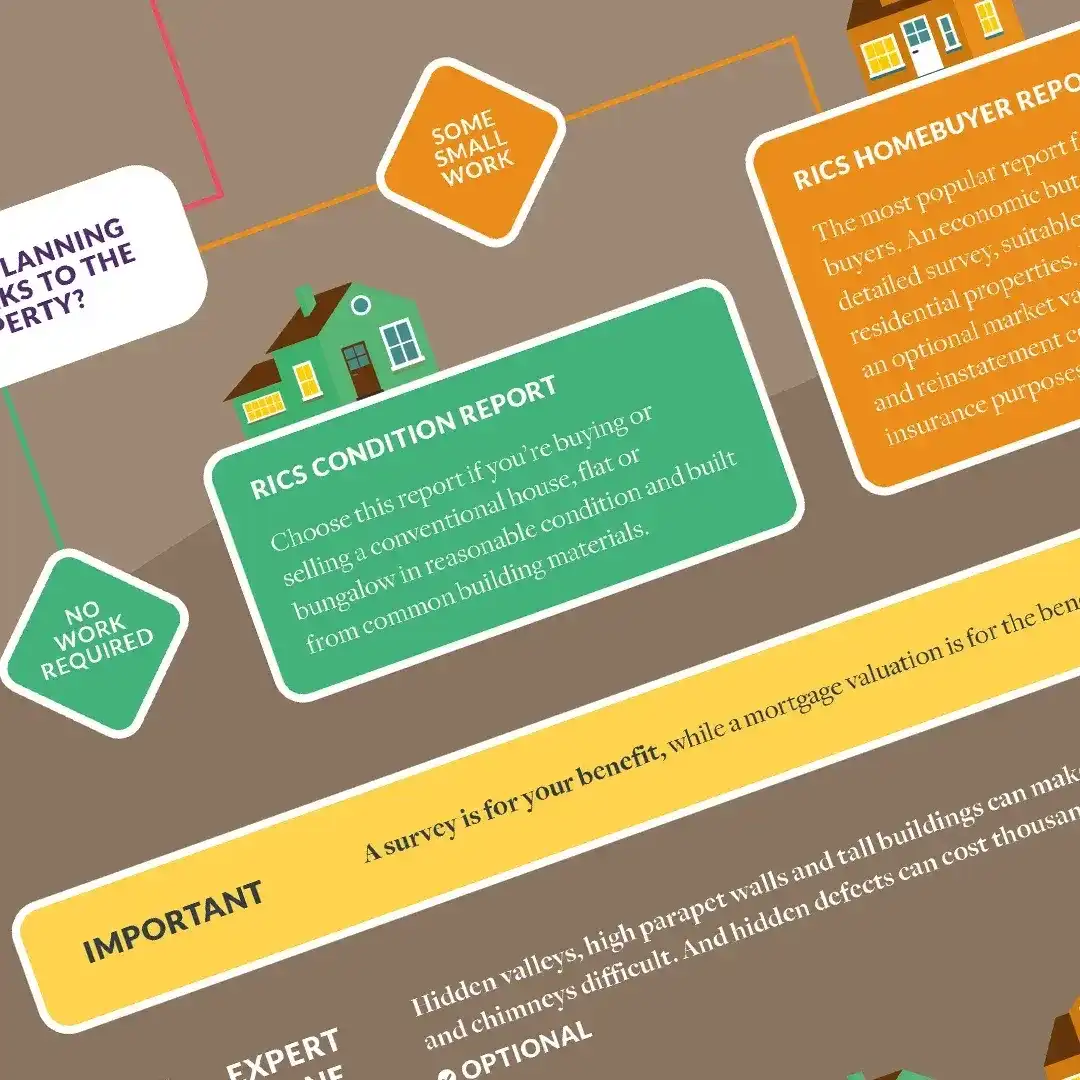Japanese Knotweed
Japanese Knotweed (or JKW) is a tall fast-growing hardy bamboo-like perennial plant. In the past it has been grown as an ornamental plant but it tends to become an aggressive weed that spreads rapidly and is highly invasive. In winter the plant dies back to ground level but by early summer the bamboo-like stems emerge from rhizomes deep underground to shoot to over 2.1m (7ft), suppressing all other plant growth.
Despite it being just a plant it can seriously damage drains and services, patios, paths and drives, boundary walls, outbuildings, conservatories and gardens. Potentially, without remediation it can reduce the value of a property and render it unmortgageable.
Identification - How to Identify Japanese Knotweed
If you suspect that Japanese Knotweed is growing on or around your property or a potential property purchase, then you need to have it identified. The easiest way to do this is to search the Identification Sheet Database from the Non-Native Species Secretariat for a comprehensive description of identifying features, including seasonal photographs and scaled diagrams.

Image courtesy of Tree Heritage
Japanese Knotweed Facts And Figures
JKW appears amongst the 100 “worst” invasive species on the Global Invasive Species Database from the International Union for Conservation of Nature .
In July 2016, the British Ecological Society produced an article in the Journal of Applied Ecology claiming an estimated £166m a year was spent remediating JKW issues in the UK.
The Problem Japanese Knotweed And Property
Because Japanese Knotweed can cause such major problems The Council of Mortgage Lenders advice on JKW states that “if left untreated it can cause physical damage to property” and therefore “presence of Japanese knotweed or other invasive species might affect the valuation of a property”.
It advises that “Valuers who inspect property for mortgage purposes are instructed to report to lenders where knotweed is present” and “Mortgage lenders will normally require evidence of treatment that will eradicate the plant as a condition of lending if knotweed is present on or near the site of a property.”
The Law
Japanese Knotweed is so invasive that it is actually against the law to plant or cause it to grow in the wild.
- Wildlife and Countryside Act 1981, c.69, Part I, Section 14: - “if any person plants or otherwise causes to grow in the wild any plant which is included in Part II of Schedule 9, he shall be guilty of an offence”. (Schedule 9 includes Japanese Knotweed).
Therefore, if you’re trying to eradicate it from your property you can’t just dig it up and compost it you have to dispose of it at a licensed refuse site.
- Environmental Protection Act 1990, c.43, Part II, Section 33 & 34 - classes JKW as controlled waste which must be disposed of at licensed refuse sites. The Environment Agency can impose an unlimited fine for breach of this.
- Gov.UK Guidance on how to “prevent harmful weeds and invasive non-native plants spreading” states you must “prevent invasive non-native plants on your land from spreading into the wild and causing a nuisance” and although “you don’t have to remove these plants or control them on your land, you could be prosecuted or given a community protection notice for causing a nuisance if you allow Japanese knotweed to grow on anyone else’s property”.
- In terms of prosecution, “you can be fined or sent to prison for up to 2 years”.
- A 2014 Home Office source document on “Reform of anti-social behaviour powers” details the potential for the serving of Community Protection Notices and the handing down of ASBOs under the Anti-social Behaviour, Crime and Policing Act 2014 for “unreasonable” conduct, including “failure to act” in “prevent[ing] the growth of Japanese knotweed or other plants that are capable of causing serious problems to communities” where this is having a “detrimental effect of a persistent or continuing nature on the quality of life of those in the locality”.
- An entire street in Canley, Coventry was the subject of press interest when the majority of residents were sent a letter, from the environment and housing enforcement manager at the city council, warning them of their legal responsibility to take control of the weed, less they face a Community Protection Notice and going on to specify that “If the community protection notice is breached then it would be a criminal offence and carries up to a maximum penalty of £2,500 for individuals or £20,000 in the case of organisations”.
How To Control Japanese Knotweed
Always seek advice from a properly accredited tradesman or surveyor before embarking on a course of control. The Royal Horticultural Society provide advice on points to consider before hiring a contractor and ways to find professional contractors for your issue.
You can also search the British Association of Landscape Industries for a database of the “Who’s Who” in invasive weed control here.
Advice on the control of JKW from the Royal Horticultural Society suggests both chemical and non-chemical solutions:
- Digging out:
- Due to depth and spread of root penetration, efficacy of this method can be slow. It may take several seasons of repeated dig-out to exhaust the energy resources of the rhizomes remaining in the ground.
- It can also create problems over disposal as Japanese knotweed is classed as 'controlled waste' under the Environmental Protection Act 1990 and requires disposal at licensed landfill sites. Alternatively, it can be destroyed on site by allowing it to dry out before burning.
- Bear in mind that very small fragments of rhizome can result in the growth of a new full plant
Chemical control:
Glyphosate-based weed killing products can be applied to the foliage which is then passed within the plant to the underground parts (rhizomes). It can potentially take at least three to four seasons to eradicate Japanese Knotweed using domestic glyphosate products so you may wish to consider using a qualified professional eradicator instead. They may have access to more powerful chemicals which could drastically reduce this time.
However, these products can be indiscriminate in the plant-life that they affect and careful application is required. If unsure, always seek advice from an accredited specialist.
Following an eleventh hour withdrawal of a proposed ban on the sale of glyphosate products in Europe in the Summer of 2016, the European Commission registered a further initiative in January 2017 which will assess whether or not to implement a similar ban on such products http://europa.eu/rapid/press-release_IP-17-28_en.htm
Always check that the products used comply with regulations and are lawful for possession and use. If in doubt The Royal Horticultural Society have produced an advisory paper on “Weedkillers for Home Gardeners”:
https://www.rhs.org.uk/advice/pdfs/weedkiller-for-home-gardeners
Biological control:
A parasite with a specific taste for Japanese Knotweed is being trialled at undisclosed sites throughout the United Kingdom, so watch this space! (See below for further information on Aphalara Itadori).
Thriving In Adversity
Since it does not seed, Japanese Knotweed thrives on disturbance.
It only takes a tiny fragment of rhizome, or discarded plant to root in disturbed soil and an entire new plant can establish and flourish. This is particularly an issue in the movement of topsoils in construction, fly tipping of garden waste and the carrying of specimens in waterways.
- Cutting back - could potentially cause the root network to look for new paths to the surface in the search for light, meaning several stems protrude from the ground, possibly some distance from the original.
- Mechanical chippers - in some instances, the plant has been put in chippers in an attempt to dispose of it, however, depending on where this material is then dumped, this could instigate the growing of several plants as each chipped fragment has the potential to grow anew.
An Olympic Undertaking
In preparation for the 2012 London Olympic Games, the Olympic Park (now Queen Elizabeth Olympic Park) required significant remediation from JKW, at an estimated cost of £70m.
Guesstimates for the eradication of JKW throughout the UK come in at £billions.
Future Hope
The Japanese Knotweed Alliance in association with the Centre for Agriculture and Bioscience International (CABI) is working to provide a natural and cost effective solution to the problem of JKW.
Aphalara itadori is a hungry critter from Japan with a taste for knotweed - in fact in tests they have found that it will gorge on the sap of the JKW plant, stunting growth and spread. A number of trials have seen this sap-sucking bug released into various undisclosed sites in the countryside of England and South Wales. Should the trial be a success and if the Aphalara can stomach our climate, then such schemes could be rolled out nationwide to help control the species - so watch this space!
History Of Japanese Knotweed
- 1825 - Originating from Japan, as the name might suggest, japanese knotweed (or JKW) was introduced to the UK as an ornamental plant.
- 1850 - The Royal Botanical Gardens at Kew received a specimen in an unsolicited package of various plant species from Holland.
- 1905 - The Royal Horticultural Society warns against planting JKW, unless “kept in check”.
- 1930s - Sale of JKW largely ends, but the spread of the species continues.
The plant does not produce seeds, instead reproducing through the spread of rhizome fragments and off-cuts, meaning every plant you see today is probably an identical twin of the first introduced almost 200 years ago.
Unsuspecting Victorians purposefully and extensively used the plant along the railway, enamoured with the fast and vast growing root systems which provided structure, strength and screening to track-side banks and verges.
- Over the past century, this hardy perennial has spread significantly.
- See the Plant Tracker website for a map of the extent of verified cases of Japanese Knotweed in the United Kingdom:
- http://www.planttracker.org.uk/map/knotweed
- Please note that this is not an exhaustive account of all occurrences of Japanese Knotweed and only acts as a representation of logged and verified occurrences of the species.
- See the Plant Tracker website for a map of the extent of verified cases of Japanese Knotweed in the United Kingdom:
RICS On Japanese Knotweed
- The Royal Institution of Chartered Surveyors (RICS) released an Information Paper on “Japanese Knotweed and residential property” in 2012, some of which is summarised below:
- “The members of the CML (Council of Mortgage Lenders) and the BSA (Building Societies Association) account for the majority of UK residential mortgage lending” and “although conditions will vary in practice, these lenders will generally want to see evidence of: an initial treatment, and a commitment by the owner of the property to fund, in advance, a three or four year treatment programme effective against Japanese Knotweed.”
- Check the CML members directory or the BSA members directory for your lender.
- “The most common effects and affected areas include the following:
- Drains and other buried services: Knotweed roots can exploit existing cracks and gaps in the pipes in their search for water, which will further damage and, in some cases, block the drains. Large, densely packed clumps or “stands” of JKW can disrupt drain runs. In the worst cases, the drains must be renewed.
- Patios, paths and drives: JKW can grow between slabs and movement joints of concrete drives and disrupt brick paving. Repairs can involve the removal of the existing paving and bedding material, treatment of the plant, removal of the disruptive crowns and roots and replacement of the path, patio or drive.
- Boundary and retaining walls: Closely packed stands can undermine garden walls with shallow foundations. The mass of the stands can “push over” retaining walls, often resulting in sudden collapse.
- Outbuildings: Vigorous stands of JKW can overwhelm lightweight, insubstantial and poorly founded outbuildings such as garden sheds, greenhouses and in some cases, poorly built garages.
- Conservatories: Although the effects will be similar to those described for outbuildings, owners, valuers and surveyors usually attribute greater importance to these structures.
- Gardens: The invasive nature of the plant can ruin well-planned and well-stocked gardens. Some owners spend tens of thousands of pounds on renovating and redesigning outside spaces, including sophisticated water features and bespoke outbuildings. JKW can spoil much of this.”
Do You Have Japanese Knotweed? We Recommend…
Memebers of INNSA (INVASIVE NON-NATIVE SPECIES ASSOCIATION)
Japanese Knotweed Solutions Ltd
Itadori House Melton Street
Radcliffe, Manchester
M26 4BR
Call
0161 7232000
Website


